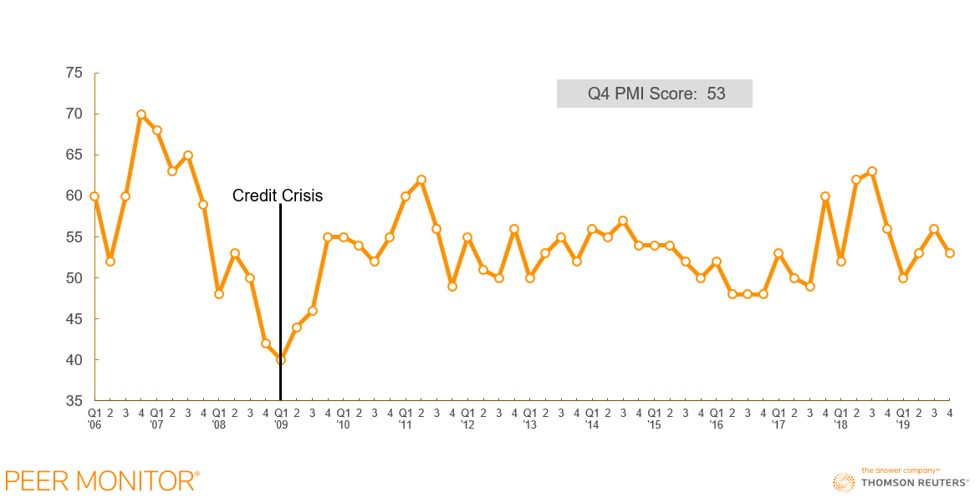The large law firm market has seen one of the best 2-year periods in a while, yet the Peer Monitor Economic Index slipped in the fourth quarter of last year
The year 2019 marked the first two-year stretch in more than a decade where demand for law firm services rose by at least 1% each year. In fact, last year may have been an even better year for large law firms than 2018, said Mike Abbott, Vice President in Market Insights and Thought Leadership for Thomson Reuters. “Growth was widespread across market segments, practice areas and geographies, and firms were able to regain some measure of pricing power.”
Despite all of this — and the fact that 2019 ended with a quarter of both solid demand and worked rate growth — falling productivity and high levels of both direct and indirect expense growth across the legal market weighed heavily upon the Thomson Reuters Peer Monitor Economic Index (PMI), causing it to slide three points to 53.
To find out more about what factors are influencing PMI, you can download a copy of the Q4 2019 PMI report here.
The PMI, produced by Thomson Reuters Peer Monitor, is a composite index score of law firm market performance, representing the quarter-over-quarter change in drivers of law firm profitability, including rates, demand, productivity, and expenses. Positive factors driving law firm profitability will produce a higher score. The PMI uses real-time data drawn from major law firms in the United States and key international markets.
“Competitive pressures and demands from clients for even greater efficiency remain,” Abbott continued. “We’re seeing many firms take advantage of current conditions by investing in innovative technologies and business models to enhance their competitiveness moving forward.”

In the new Q4 2019 PMI report, we focus on the emergence of a new “middle market” is revisited, and how work in practice areas such as corporate and litigation are more frequently beginning to migrate towards law firms in this new middle.






